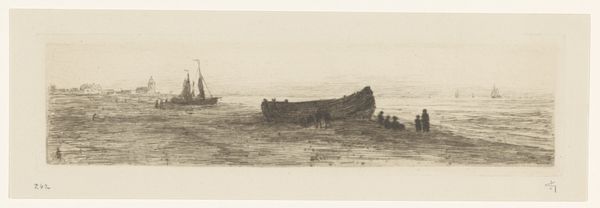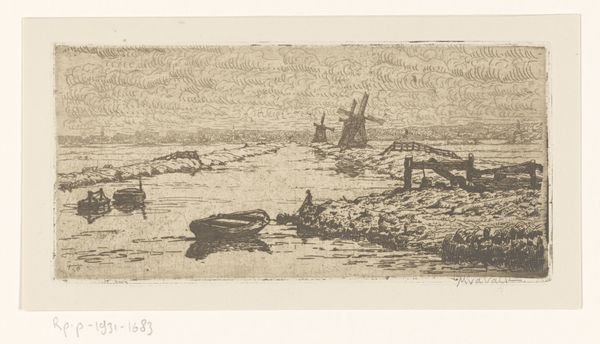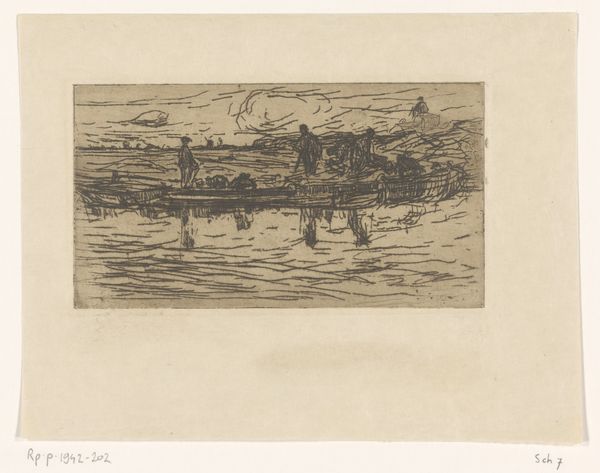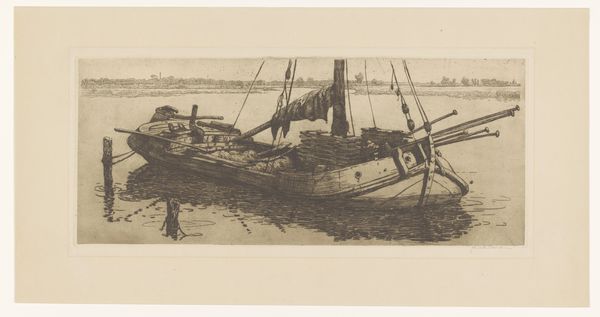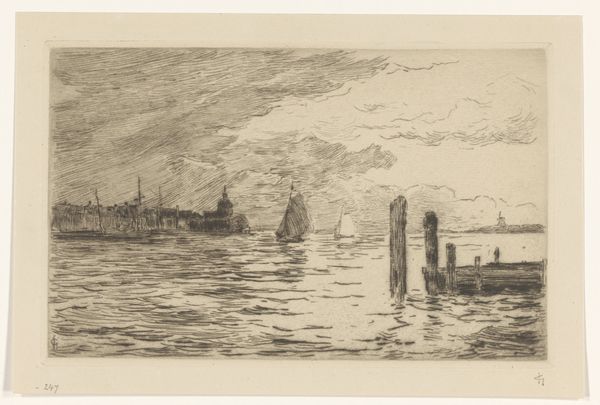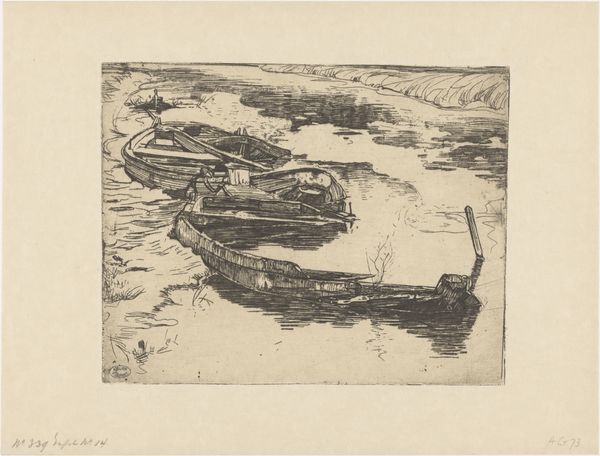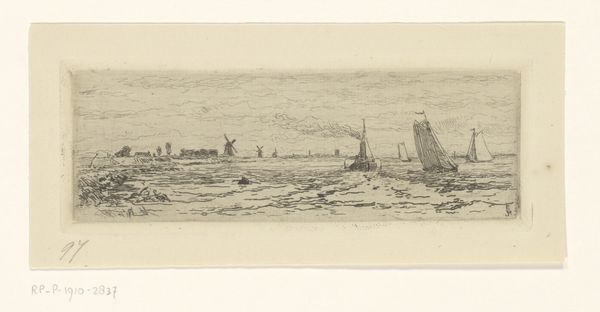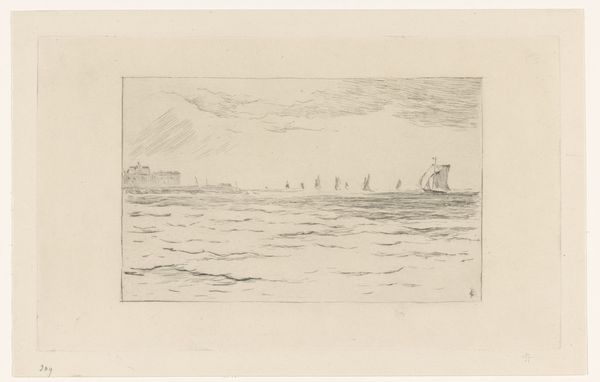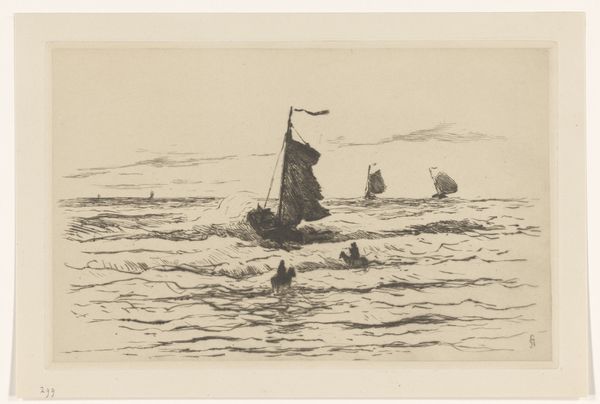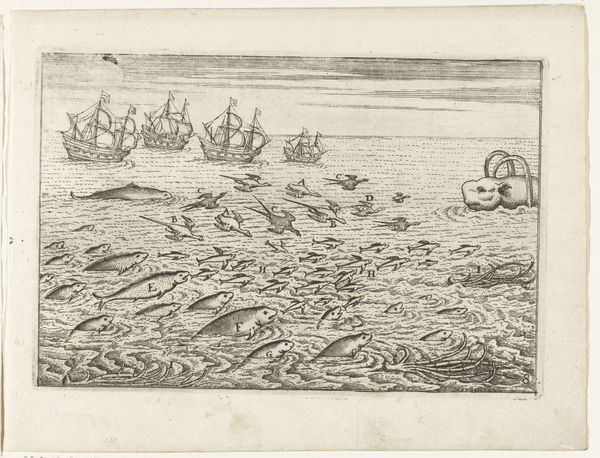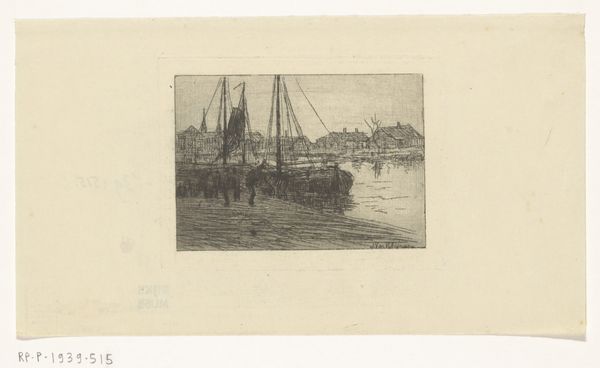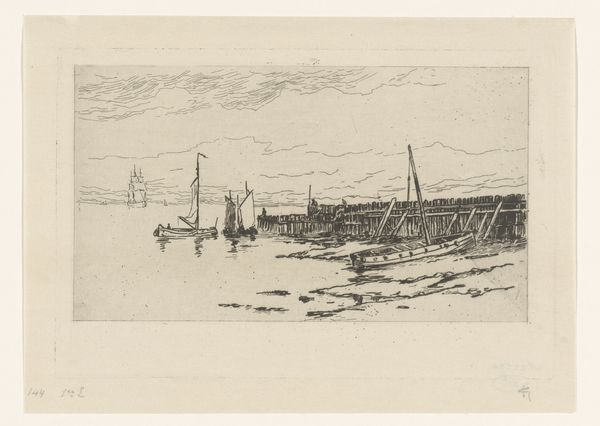
print, etching
# print
#
etching
#
landscape
#
etching
#
realism
Dimensions: height 109 mm, width 199 mm, height 134 mm, width 224 mm
Copyright: Rijks Museum: Open Domain
Editor: We are looking at “Scheveningen,” an etching by Etienne Bosch created before 1931. It has a slightly gloomy mood. What strikes me is how the artist created a sense of depth using only line and texture. What do you see in this piece? Curator: Indeed. If we analyze the composition formally, the artist has created a compelling contrast between the textures of the sea and sky using variations of the etched line. The structural arrangement also dictates our reading: note the diagonal thrust of the derelict boat pointing towards the horizon and the receding sailboat in the distance. Editor: So, it's less about what's depicted, but *how* it's depicted? Curator: Precisely. The etching medium, with its inherent capability for fine lines and subtle tonal gradations, becomes central to our understanding. Consider, for example, the interplay of light and shadow achieved solely through density of line. Can you discern the semiotic possibilities of these technical decisions? Editor: Are you suggesting the technique itself communicates meaning, beyond just illustrating a scene? The busyness near the shore indicates density or tension, while the bare horizon implies distance and calm? Curator: Exactly. Think about it: The formal elements - line, texture, composition - operate as signifiers. Through semiotic analysis, the texture signifies a feeling of activity; that horizon, open space. The artist directs not only *what* you see, but *how* you interpret that image and connect disparate compositional aspects to each other. Editor: I never thought about etching having a symbolic vocabulary. It definitely enriches my view of how artists chose specific methods to match the emotion. Curator: Agreed. It’s an example of how technical elements work in tandem to create a singular work.
Comments
No comments
Be the first to comment and join the conversation on the ultimate creative platform.
